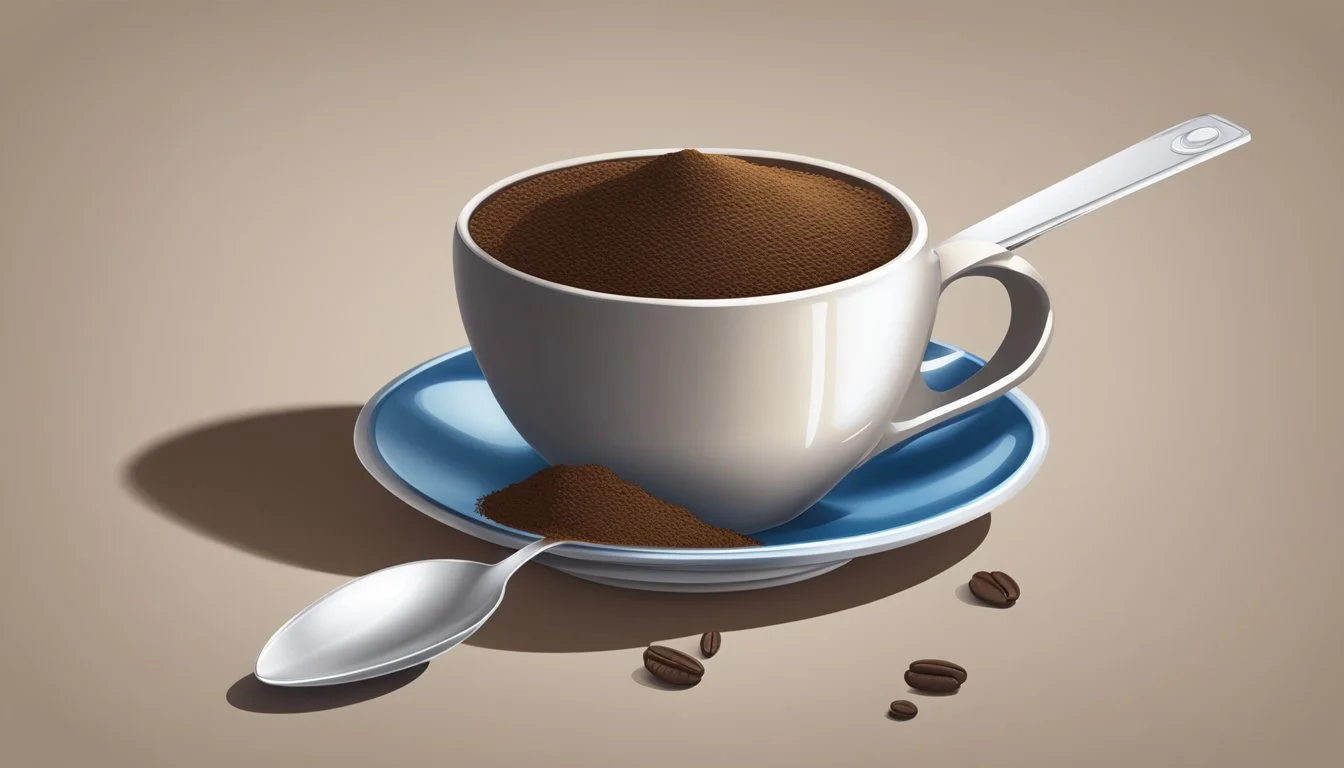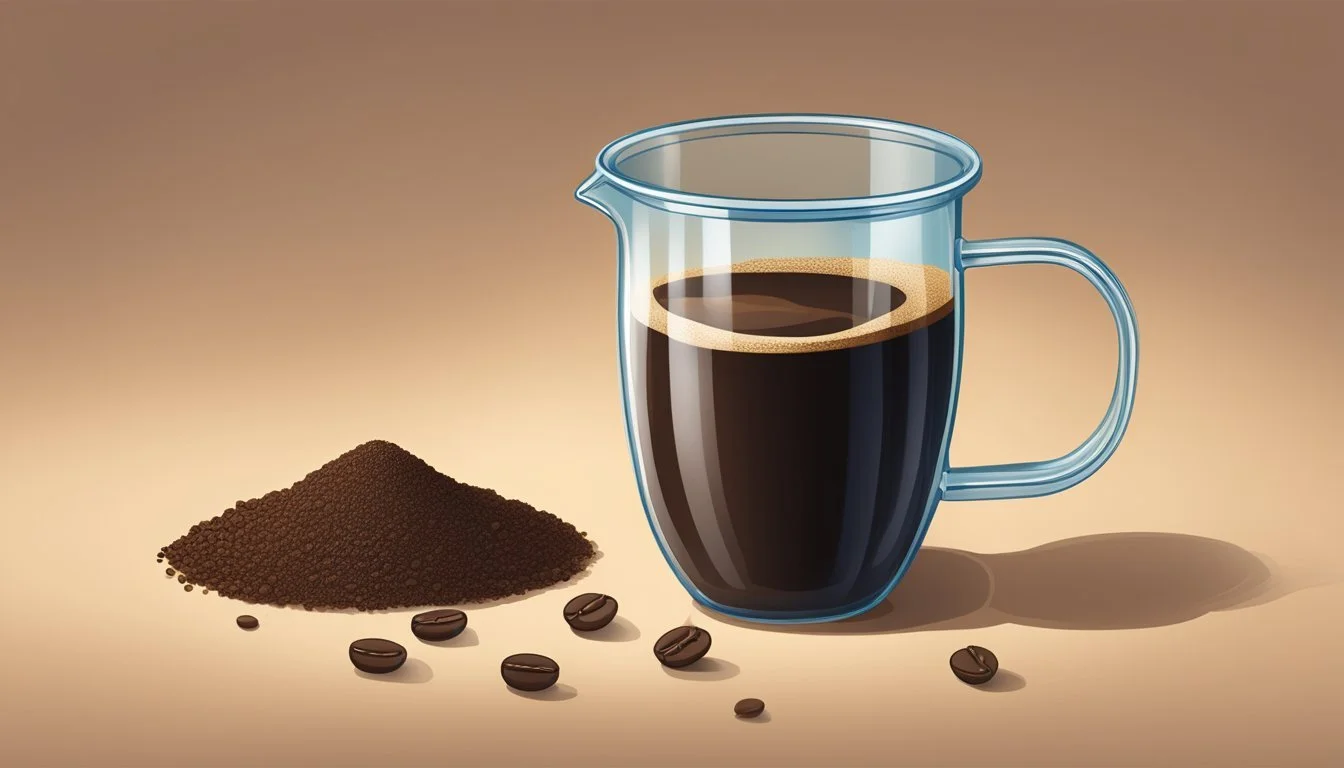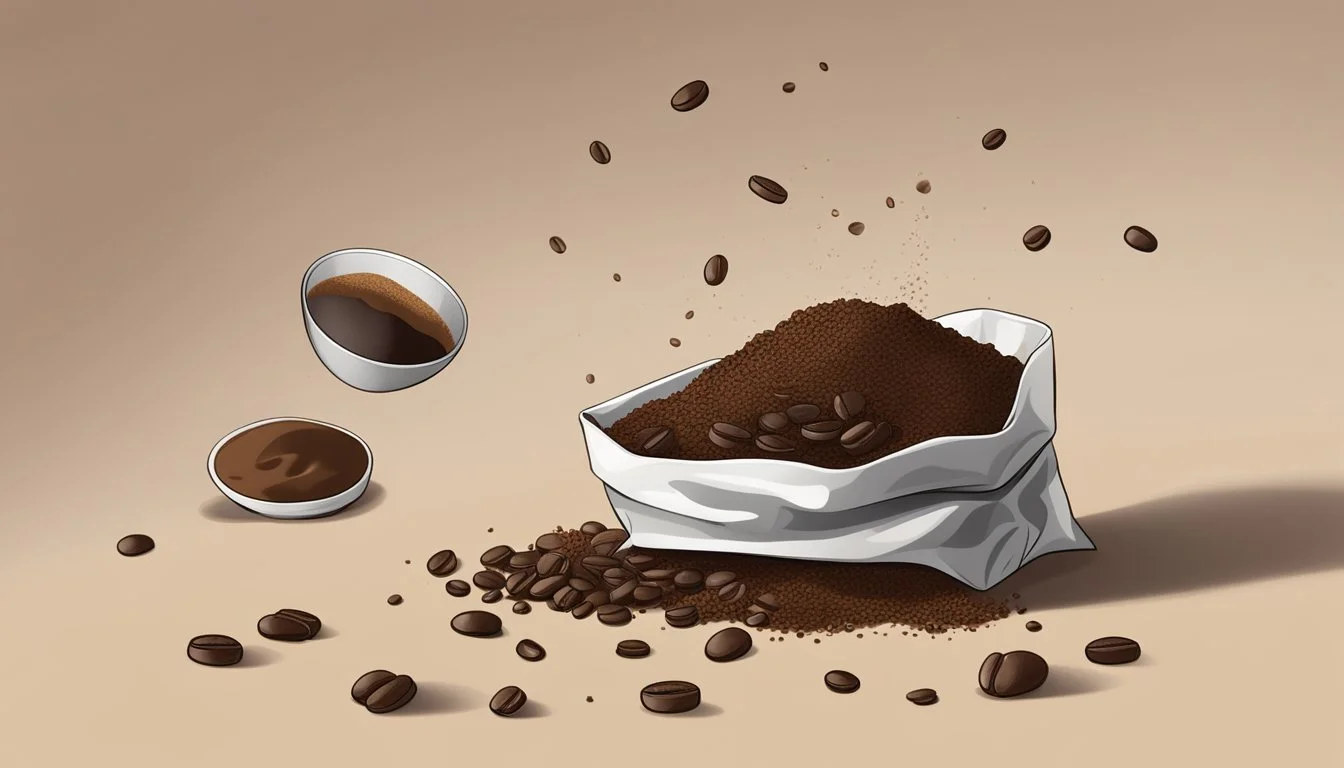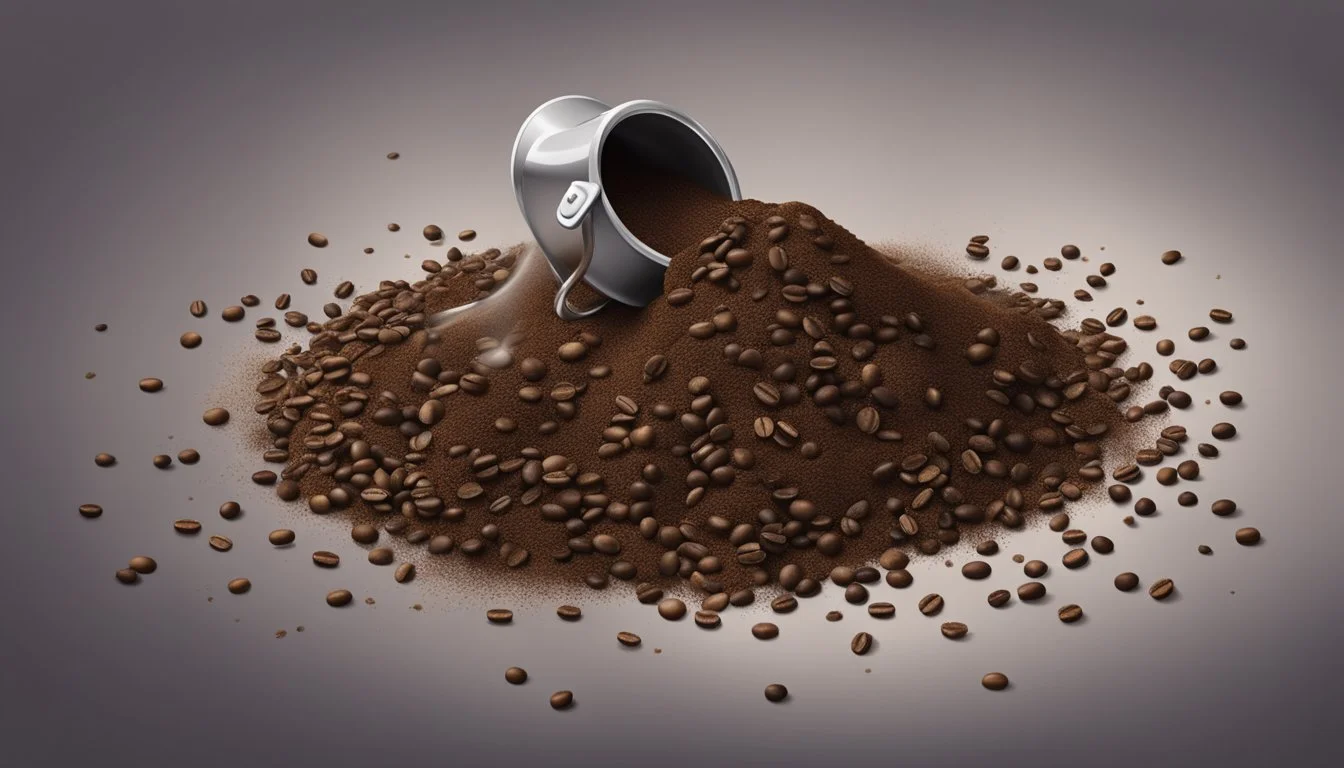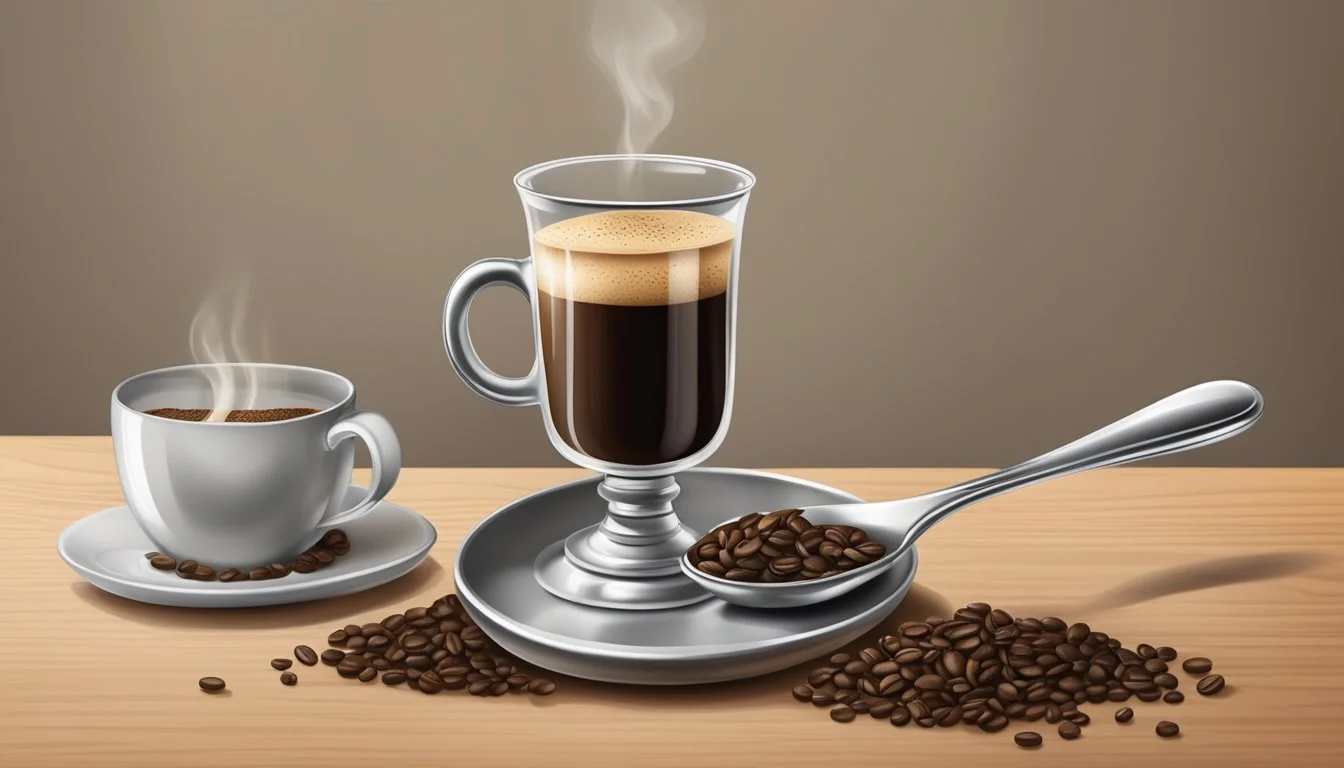How Many Tablespoons in a Pound of Ground Coffee
Accurate Measuring for Perfect Brews
Understanding the conversion between weight and volume is essential when dealing with coffee grounds. In the context of brewing coffee, the measurement of coffee often transitions from pounds to tablespoons, allowing for precise portion control and consistent strength in each cup. One pound of ground coffee is typically equated to 64 tablespoons. This is based on an average measurement that assumes a medium grind, which is most commonly used for drip brewing methods.
The number of tablespoons of coffee grounds you get from a pound can vary based on factors such as grind size and density. A fine grind may result in more tablespoons per pound due to its compact nature, while a coarser grind may yield fewer. Additionally, the spoon size used for measuring can cause variation, as no two tablespoons may scoop exactly the same amount of coffee grounds. This is widely acknowledged by coffee enthusiasts and is considered when preparing coffee to ensure the ideal balance of flavor and potency.
Understanding Measurements in Coffee
When brewing coffee, precision is crucial. The taste and strength of the coffee are heavily influenced by the ratio of coffee to water. This section will explore common units of measurement used in coffee preparation, the significance of their accuracy, and the tools needed for proper measurement.
Cups, Tablespoons, and Pounds Explained
Cups: In the context of coffee, a cup typically refers to an 8-ounce serving. However, this can vary based on personal preference or coffee machine brand.
Tablespoons: A tablespoon is a standard volume measurement in cooking, equivalent to three teaspoons or approximately 15 milliliters.
Pounds: A pound is a unit of weight, equal to 16 ounces or about 453.6 grams. When measuring coffee, pounds usually refer to the weight of the coffee beans before grinding.
The specific amount of tablespoons in a pound of coffee can differ due to variables such as the grind's coarseness and the coffee's density.
Importance of Accurate Coffee Measurements
Accurately measuring coffee ensures balance in flavor and strength while preventing waste. A common coffee brewing ratio is one to two tablespoons of ground coffee for every six ounces of water. Precise measurements also contribute to consistency, which is especially vital for coffee enthusiasts and professionals who aim to replicate the same quality with every cup.
Tools for Measuring Coffee
Kitchen Scale: This is the most precise tool for measuring coffee by weight. Scales can provide measurements in grams, ounces, or pounds.
Measuring Spoons: These are typically used to measure coffee by volume. For consistent results, one should level the spoonful each time.
When one measures coffee, it is advisable to choose one method (weight or volume) and stick with it. Weight measurements are generally more accurate than volume due to the varying density of coffee grounds.
Coffee Standards and Conversions
Understanding the precise conversions between weight and volume is crucial for achieving consistency in coffee preparation, whether it's for single servings or large batches.
General Coffee Measurement Conversions
When measuring coffee, a common standard is that 2 tablespoons of coffee grounds is equal to approximately 10 grams or 0.36 ounces, which is the recommended amount for a single 6-ounce cup of coffee.
1 pound of coffee equates to 16 ounces or 453.6 grams.
1 tablespoon of ground coffee typically weighs about 5 grams.
The standard conversion table:
Pounds of Coffee Ounces (Weight) Grams (Weight) Tablespoons (Volume) 1 16 453.6 64 - 96*
*Exact number can vary depending on grind size and density.
Conversion Variability by Coffee Type
The number of tablespoons in a pound of coffee can differ significantly based on the roast and grind size. A denser, finer grind will have more tablespoons per pound than a coarser grind due to smaller particle size and less air space.
Fine grind: Higher density, more tablespoons per pound.
Coarse grind: Lower density, fewer tablespoons per pound.
Grind sizes affect the volume of coffee:
Grind Type Density (Approximation) Tablespoons Per Pound Fine High Up to 96 Medium Medium Around 64 - 96 Coarse Low Around 64
Measurement Conversion for Recipes
When translating a recipe from cups of coffee to tablespoons of coffee or vice versa, it's imperative to use the correct conversion factoring in the type of coffee being used.
For recipes requiring a specific strength:
Strong coffee: Use more than 2 tablespoons of coffee grounds per 6-ounce cup.
Regular coffee: Use the standard 2 tablespoons per cup.
Tablespoons to pounds conversion should consider the volume increase when coffee is ground:
Whole beans: Fewer tablespoons per pound due to larger volume.
Ground coffee: More tablespoons per pound as grinding increases the yield by volume.
Perfecting Coffee Strength and Taste
To craft the ideal cup of coffee, one must consider various elements that can influence the strength and taste. These include the coffee-to-water ratio, grind size, and the roast level of the beans. Each factor plays a critical role in the resulting flavor profile and potency of the brew.
Determining the Right Coffee-to-Water Ratio
The coffee-to-water ratio is a vital component in brewing. For a strong cup, a ratio of about 15:1 or 16:1 is recommended, meaning for every gram of coffee, 15 to 16 grams of water are used. Precise measurements are key; thus, knowing that a pound of coffee typically contains about 64 tablespoons allows for accurate scaling of the recipe to suit any serving size.
Effects of Coffee Grind Size on Flavor
The grind size of coffee affects both the flavor extraction and the brewing time. A coarse grind is ideal for a French press, which requires a longer brew time of around 4-5 minutes. Alternatively, a fine grind suits methods like espresso, where the brewing time is short. Incorrect grind size can result in over-extraction, leading to bitterness, or under-extraction, producing a flat taste.
Influence of Roast Level on Coffee Strength
The roast level impacts the coffee's strength and the subtleties of its flavor profile. Dark roasts typically present a stronger, more pronounced taste, while light roasts tend to retain more of the bean's original character and may offer a more nuanced flavor. Opting for a roast level that complements your preferred brewing method can significantly enhance the overall coffee experience.
Brewing Methods and Measurements
When brewing coffee, the ratio of coffee to water is crucial for achieving the desired flavor and strength. Precise measurements for different brewing methods ensure consistency and optimal extraction.
Optimizing Measurements for Espresso
For espresso, an espresso machine uses a fine grind, and the standard measurement is 1 to 2 tablespoons (7 to 14 grams) of coffee for a single shot (1 ounce) of espresso. The exact amount may be fine-tuned depending on the coffee blend and the machine's specific requirements.
Measurement Guidelines for French Press Coffee
With French press coffee, a coarse grind is preferred to prevent fine particles from seeping through the mesh filter. A common guideline is to use 1 tablespoon (7 grams) of coffee for every 4 ounces of water, which allows for a full extraction without over-extraction, which can lead to bitterness.
Adjusting Measurements for Pour-Over and Drip Brewing
For pour-over and drip coffee makers, a medium grind works best. The coffee-to-water ratio typically falls between 1:16 and 1:18, meaning for every 1 gram of coffee, 16 to 18 grams of water (or approximately 1 tablespoon of coffee to every 240-270 ml of water) is used. Adjust the measurements based on the desired strength of the coffee.
Coffee Consumption and Storage
When considering coffee consumption and storage, one must carefully estimate how much coffee to purchase and understand the best methods for keeping it fresh. The following subsections will discuss the necessary steps and best practices in detail.
Estimating Coffee Consumption and Purchase Size
Coffee enthusiasts should first determine the amount of coffee they consume to make informed decisions on purchase size. It's generally understood that a pound of coffee yields approximately 64 to 90 tablespoons of ground coffee, which translates to about 32 to 45 cups of brewed coffee, assuming one uses 2 tablespoons per 6 to 8 ounce cup. For larger 12 oz cups, a pound can make around 21 to 31 cups. Here's a brief overview:
Bag Size (Pounds) Tablespoons Approx. Cups (6-8 oz) Approx. Cups (12 oz) Approx. 1 64 - 90 32 - 45 21 - 31
Based on this information, individuals can calculate their weekly or monthly coffee needs and choose the appropriate bag size. If the coffee lasts longer than expected, storage becomes crucial to maintaining its quality.
Best Practices for Storing Coffee
Once the coffee is purchased, proper storage is key in preserving its flavor and freshness. Coffee should be stored in an airtight container to prevent exposure to air, moisture, and odors. It's crucial to place the container in a cool, dark place away from direct sunlight to avoid degradation of the beans or grounds. Here is a storage guide:
Airtight Container: Blocks out external elements that can stale coffee.
Cool, Dark Place: Temperature fluctuations can damage the beans.
Avoid Fridge/Freezer: Often believed to help, but can contribute to moisture and aroma loss.
Following these steps will ensure the longevity of the coffee's flavor and potency. An opened bag of coffee, when stored correctly, can last for a few weeks before it begins to lose noticeable freshness.
Customizing Your Coffee Experience
Creating a satisfying coffee experience often involves experimenting with varying amounts of coffee and paying attention to personal preferences. Understanding the relationship between tablespoons of coffee and overall taste can lead to a truly personalized cup.
Adjusting Coffee Measurements to Taste Preferences
To attain the desired strength in a cup of coffee, one must consider both the coffee-to-water ratio and the grind size. A standard measure suggests using 2 tablespoons of ground coffee per 6 ounces of water. However, adjusting the tablespoons of coffee can cater to an individual’s taste preference. More tablespoons will result in a stronger, bolder flavor, while fewer will offer a lighter taste. Bean freshness and consistency play significant roles; freshly ground beans can enhance the coffee's overall flavor and strength.
Exploring Different Coffee Recipes
Diverse coffee recipes provide a vast landscape for exploration. For example:
A French press may require a coarser grind and a different scoop amount compared to an espresso.
Some recipes may recommend a specific coffee scoop, ensuring accuracy in measurements for the perfect balance.
Experimentation with the amount of coffee allows for the discovery of new tastes and the customization according to one's personal preference.
Italian, French, and Turkish coffees all involve variant recipes and cup sizes, allowing connoisseurs to personalize their experience.
Personalizing Your Coffee Cup Size
The size of the coffee cup plays an essential role in determining the amount of ground coffee to use. Whether one prefers a small, concentrated espresso shot or a large, leisurely mug of drip coffee, fine-tuning the tablespoons of coffee per cup size ensures a consistent taste. Personal cup size can vary widely:
Espresso: 1 oz cup size may need approximately 1 tablespoon of finely ground coffee.
Standard cup: An 8 oz cup may require 1-2 tablespoons depending on desired strength.
The key to a personal coffee experience is in the details—measuring the ground coffee accurately, considering the chosen cup size, and adjusting for personal taste preferences.
Practical Tips and Tricks
When measuring ground coffee for brewing, the quantity can significantly affect the flavor and strength of a cup of coffee. This section provides some helpful guidelines to ensure consistency in your coffee measurements, whether you’re working with pre-ground coffee or grinding in bulk.
Coffee Measurement Rules of Thumb
A standard rule of thumb is that one pound of coffee is approximately 64 tablespoons when dealing with a medium grind size. However, this may vary slightly due to the grind's density and moisture content. Importantly, measurements vary between brands and specific types of coffee.
For medium ground coffee: Roughly 64 tablespoons per pound.
For fine ground coffee: This could yield more tablespoons due to its denser packing.
Remember that these are general guidelines, and one should adjust based on the coffee brand and preferred strength.
Measuring Coffee Without a Scale
For those without a scale, learning how to measure coffee can be a bit of a challenge. Still, one can measure it reasonably well using household items.
Tablespoons: Using a standard tablespoon measurement can be effective. For a medium-strength cup of coffee, two level tablespoons of ground coffee to six ounces of water is a common ratio.
Measuring cups: A measuring cup can also be used, where 1/16 of a cup is equal to one tablespoon, giving a volume-based approximation for those without a scale.
It should be noted that a tablespoon varies in volume from 0.18 to 0.35 oz, which impacts the number of tablespoons in a pound.
Understanding Pre-Ground Coffee Measurements
Pre-ground coffee often comes in various package sizes, which can make measuring out portions for a cup of coffee more cumbersome.
Check the packaging: The packaging may provide guidance on the number of servings or recommended measurements.
Conversion: Keep in mind that a pound of ground coffee typically translates to about 90.72 tablespoons, depending on the grind. This figure can be used to estimate the number of cups possible from a package.
Knowing these basics on how pre-ground coffee is measured can be invaluable for making consistently good cups every time, especially when the packaging does not have specific measurements provided.
Advanced Coffee Concepts
Within the realm of coffee brewing, the precision in measuring ground coffee is intrinsic to achieving a harmonious fusion of flavors and aromas. Grasping the intricate balance of these aspects requires an analytical approach to the coffee brewing process.
Analyzing the Balance of Coffee Flavors
The flavor profile of a cup of coffee is a delicate balance of sweet, sour, and bitter notes, with each contributing to the overall taste. The proportions of coffee to water play a pivotal role in this balance. Calculations are crucial, as they dictate the intensity and strength of the cup. For instance, a standard cup of coffee may start with 2 tablespoons of ground coffee, which equates to approximately 10 grams, per 6 ounces of water.
The balance of flavors is also dependent on the aroma, which is influenced by the freshness of the ground coffee and its exposure to air. Aroma compounds are volatile; the longer ground coffee is exposed, the more diminished the aroma, leading to a less expressive flavor profile.
Exploring the Science of Extraction
A comprehensive understanding of extraction time is imperative when discussing the science behind a cup of coffee. The extraction time refers to how long water is in contact with the coffee grounds. A shorter extraction might yield a more acidic taste, whereas an over-extraction can result in a bitter cup. Achieving optimal extraction time is a balancing act which includes several variables:
Grind size (finer grinds extract faster)
Water temperature (hotter water increases extraction speed)
Amount of coffee (more coffee requires longer extraction time)
Extraction should be monitored and adjusted to ensure the best possible cup. One must aim for uniform extraction, as uneven extraction can cause parts of the coffee to be over-extracted, leading to bitterness, while other parts may be under-extracted, producing a sour taste.
By paying close attention to these advanced concepts, one can manipulate the variables to craft an exceptional coffee experience.
Accessories and Equipment
When it comes to brewing the perfect cup of coffee, the right accessories and equipment are indispensable. They not only ensure accuracy in coffee-to-water ratios but also enhance the overall brewing experience.
Choosing the Right Coffee Machine
Selecting an appropriate coffee machine is critical for achieving desired coffee results. For instance, a drip brewer works well for those who prefer their coffee ready-made in a pot, suitable for serving multiple cups at a time. On the other hand, an espresso machine caters to individuals seeking a concentrated, rich cup of coffee frequently enjoyed in smaller coffee cups or travel mugs. For enthusiasts of less acidic and smoother coffee, a cold brew maker is the preferred equipment. It's essential to pay attention to the machine's ability to regulate water temperature, as it significantly impacts the flavor extraction from the coffee grounds.
Essential Coffee Measuring Accessories
Accurate measurement of coffee grounds is crucial for a consistent flavor profile. Key to this process is the use of a reliable measuring spoon. A standard measurement to remember is:
1 tablespoon of coffee grounds ≈ 5 grams
Given that a pound consists of 453.6 grams, a pound of coffee translates to roughly:
90.72 tablespoons or
About 64 tablespoons for a more conservative estimate, depending on the grind density.
Following these measurements ensures the right strength and minimizes waste. For those who take their coffee-making precision seriously, investing in a digital scale can add another level of accuracy, allowing for measurements in grams to cater to all types of coffee preparations.
Consumer Insights
When discussing how many tablespoons are in a pound of ground coffee, it's vital to consider current consumer trends and how brand and packaging nuances influence measurement preferences.
Popular Coffee Consumption Trends
Consumers typically judge the strength of coffee by the ratio of coffee to water, leading to a variation in the number of tablespoons used. A common trend is the preference for robust flavors, with many coffee drinkers opting for two tablespoons of ground coffee per six ounces of water to achieve a strong cup. Some coffee lovers use precise scales to measure coffee grounds instead of relying on tablespoons. Coffee machines come with their own instructions for the ideal coffee-to-water ratio, and this is reflected in how many tablespoons users measure out per pound.
Standard measure: 2 tablespoons per 6 ounces of water
Coffee Machines: Often include specific instructions for ground coffee amount
Strength of Coffee: Customizable based on personal taste
Impact of Brand and Packaging on Measurement Preferences
Different brands may provide a range of measurement conversion instructions on their packaging, which could impact how consumers measure their coffee. While some packages list the number of tablespoons for a strong cup, others might suggest a different amount for a standard coffee mug. This causes some consumers to adapt their measurements according to the specific brand's guidelines. In addition, the way a pound of coffee is packaged can affect the density and grind size of the coffee, leading to variations in the number of tablespoons per pound.
Brand Instructions: Varying guidelines on packages
Packaging Design: Influences grind density and size
Table Example: Measurement Conversions by Brand Packaging
Brand Strength Suggested Tablespoons per Pound Instructions Brand A Strong 64 2 tbsp per 6 oz water Brand B Standard 90 1.5 tbsp per 6 oz water Brand C Mild 72 1 tbsp per 8 oz water
Consumers often adjust their coffee grounds usage not only based on their preferred strength of coffee but also in compliance with the specific brand's directions and how the coffee grounds are presented in the package.
Summary and Final Thoughts
When measuring ground coffee, precision is essential for consistency in brewing. A pound of ground coffee equates approximately to 64 to 90.72 tablespoons. This range accounts for variations in grind size and coffee density. Brewing enthusiasts will find that understanding these measurements ensures an accurate coffee-to-water ratio, which is vital for achieving the desired coffee strength and flavor.
To further assist readers, below is a summarized format listing the correlation between pounds and tablespoons:
Weight to Volume: 1 pound of coffee = 64 to 90.72 tablespoons
Density considerations: Finer grinds may increase tablespoon count; coarser grinds may decrease it.
It's important to note that while tablespoons are a common household measurement, using a kitchen scale may yield more precise results for coffee grounds.
Weight (Pounds) Equivalent (Tablespoons) 1 64 - 90.72
Ground coffee is more compact than whole beans; hence, a scale helps prevent over-estimating when using volume measures like tablespoons. One must bear in mind that the brewing method may require adjustments to the coffee quantity. For instance, espresso demands a finer grind and more grounds per ounce of water compared to a French press.
By weighing and measuring accurately, coffee lovers can enjoy a consistent quality in their daily brew, retaining the strength and flavor suited to their personal taste.



